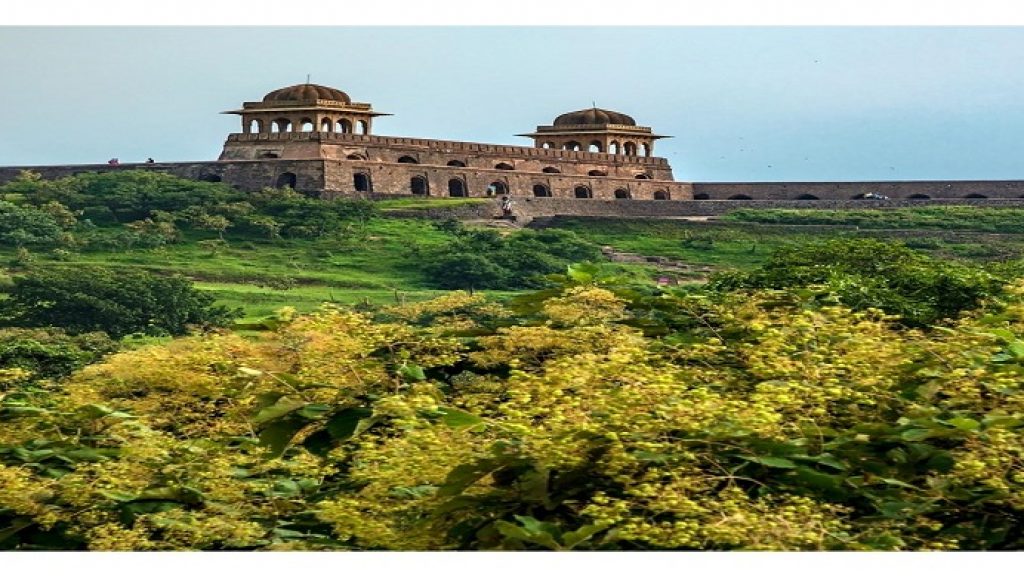
Baz Bahadur, ever so fond of music, was the last independent ruler of Mandu. Once out hunting, Baz Bahadur chanced upon a shepherdess frolicking and singing with her friends. Smitten by both her enchanting beauty and her melodious voice, he begged Roopmati to accompany him to his capital. Roopmati agreed to go to Mandu, where she would live in a palace within sight of her beloved and revered river, Narmada. Thus was built the Rewa Kund at Mandu. Unfortunately, the romance of this Muslim prince and Hindu shepherdess was doomed to failure. The great Mughal Akbar decided to conquer Mandu. Akbar sent Adham Khan to capture Mandu, and Baz bahadur challenged him with his small army. No match for the tremendous Mughal army, Mandu fell easily. In 1599, Ahmad-ul-Umri Turkoman, who was in the service of Sharaf-ud-Din Mirza, wrote the story of Rani Roopmati in Persian. He collected 26 poems of her and included them in his work. The original manuscript was passed to his grandson Fulad Khan, and his friend Mir Jafar Ali made a copy of the manuscript in 1653. Mir Jafar Ali's copy ultimately passed to Mahbub Ali of Delhi and, after his death in 1831, passed to a lady of Delhi. Jemadar Inayat Ali of Bhopal brought this manuscript from her to Agra. This manuscript later reached C.E. Luard and was translated into English by L.M. Crump under the title, The Lady of the Lotus: Rupmati, Queen of Mandu: A Strange Tale of Faithfulness in 1926. The Rewa Kund is a reservoir built by Baz Bahadur at Mandu, equipped with an aqueduct to supply Roopmati's palace. Today, the site is a holy spot. Baz Bahadur's Palace was constructed in the early 16th century. It is notable for its spacious courtyard fringed with halls and high terraces that give a terrific view of the lovely surroundings. Rani Roopmati's Pavilion was built as an army observation post. However, it served a more romantic purpose as Roopmati's retreat. From this picturesque pavilion perched on a hilltop, the queen could gaze at her paramour's palace and the Narmada flowing by, below. In addition, Rani Roopmati's double pavilion perched on the southern embattlements afforded a beautiful view of the Narmada valley.